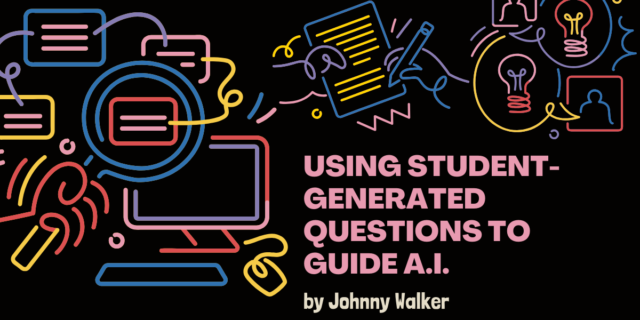
Even as instructional techniques shift and change, reading remains an irreplaceable tool for learning and growth. But while the importance of reading remains constant, the challenge educators face is keeping it relevant for the students. Some students dive deep into reading, while others barely skim the surface. One of the driving factors? Relevance.
The Pressing Need for Relevance in Reading
In today’s interconnected world, students are not just absorbing information. They’re synthesizing it, asking questions, and making connections. As students have questions about global issues, societal dynamics, and personal challenges, they often find traditional reading materials disconnected from their lives. This isn’t just about personal preferences—it can signal a disconnect between curriculum design and changing student interests. A goal should be for reading materials and assignments to be a source of connection for our students, not further frustration.
Relevance as a Cornerstone of Effective Reading Instruction
For reading instruction to be effective and engaging, it’s essential to consider both the content and the approach. The materials students read, and the methods used to explore them, are each important for creating a connection with the text. To do this, we can aim to tailor reading content to students’ unique interests and guide their interaction with this content for deeper understanding.
Student-Centric Topics
Each student brings their own experiences, curiosities, and aspirations to their reading. Now, imagine if our educational approach was equally dynamic. Instead of a rigid curriculum, consider an inquiry-based approach that evolves based on student feedback. This isn’t about giving up control—it’s about sharing it. Inviting students to voice their interests makes learning more engaging and more collaborative.
Initiating Deeper Engagement through Guided Questions
Reading is a multi-dimensional activity. Once the right content is selected, the next step is to foster deeper interaction with it. Here’s where guided questioning and discussion come into play:
- Surprises and New Discoveries: Encouraging students to discuss unexpected elements can lead to broader discussions about preconceptions and biases.
- Background Knowledge and Assumptions: By reflecting on what an author assumes a reader knows, students can bridge knowledge gaps, enhancing comprehension.
- Evolving Perspectives: This isn’t just about agreement or disagreement but about growth. How has reading something reshaped or reinforced existing beliefs?
These questions push students to not just read words on a page, but to interact with that content along the way.
The Ripple Effects of Reading Relevance
The true power of relevance in reading is not just about the immediate spark of interest it ignites in the classroom; it’s about the long-lasting impact it leaves on a student’s approach to learning and their broader worldview. When a text resonates with a student’s personal experiences and interests, they move from being passive consumers to active readers.
Consider the profound transformation that takes place when a student sees their own questions, doubts, and curiosities mirrored in what they read. This connection can spur deeper inquiries, prompt discussions, and even lead to extracurricular opportunities. Imagine the student who reads a relevant article about environmental conservation. Not only will they grasp the concepts better, but they could also be inspired to participate in a community clean-up project or consider environmental studies as a future academic pursuit.
Relevance in reading also cultivates a habit of seeking connections in other areas. A student who resonates with a historical text might begin drawing parallels with current global events. Another who connects with a poem might become more empathetic, understanding, and open-minded in their daily interactions.
In essence, the ripple effects of relevance in reading extend far beyond an immediate “aha” moment. It sets the stage for a continuous journey of critical thinking and personal growth, shaping students into curious learners and informed citizens.
Preparing Students for a World Beyond the Classroom
As educators, we all want our students to have the skills and insights needed to navigate the world outside of their classroom. In this mission, the significance of relevance in reading cannot be understated.
Relevant reading helps students hone the skills of critical analysis, discernment, and synthesis. They learn to draw connections between disparate pieces of information, to question the status quo, and to form their own informed opinions. This is particularly crucial in our current digital age, where information is abundant, but its reliability can often be questionable.
Discerning readers won’t just passively accept information presented to them. Instead, they’ll evaluate its source, its context, and its implications. Whether they’re sifting through news articles, workplace documents, research papers, or even Tik Tok, they’ll be more equipped to consume information critically.
Furthermore, by connecting classroom readings to real-world scenarios, we’re helping students see the broader applications of their knowledge. They begin to understand that the skills they develop in school—critical thinking, analysis, empathy, and more—have tangible impacts outside of school.
Relevance is not just an educational strategy; it’s the bridge between academics and application. Teaching is about more than delivering lessons; it’s about sparking curiosity and guiding students to growth. By ensuring that reading remains relevant for our students, we’re helping them become informed, critical, and passionate lifelong learners.


